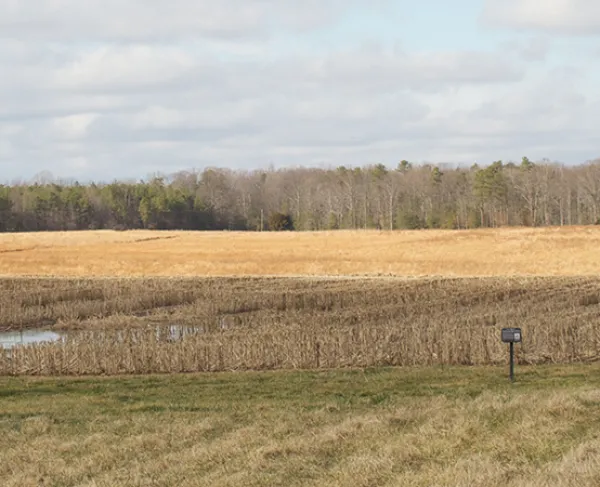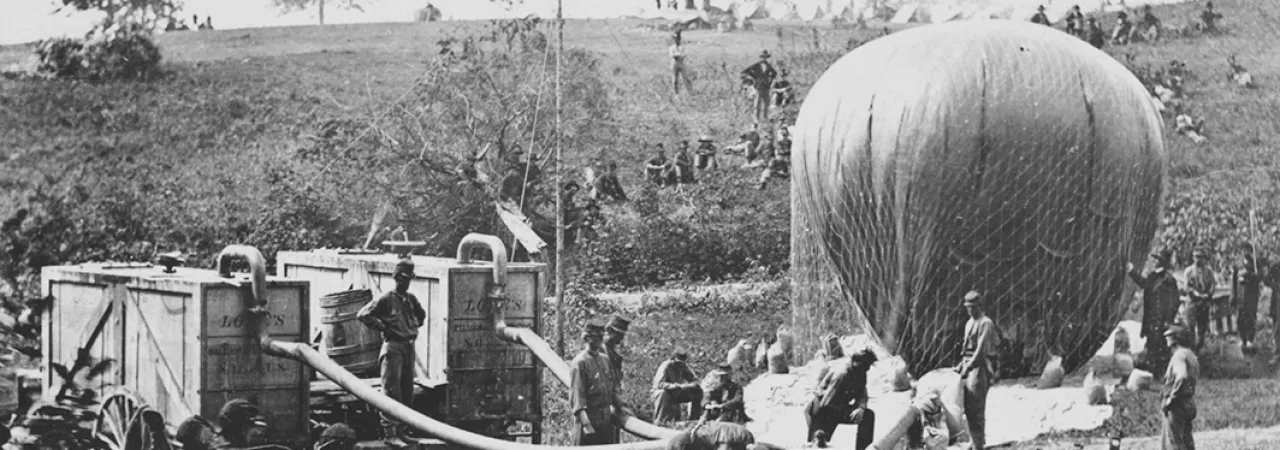
Dr. James L. Green
James L. Green, Director of Planetary Science at NASA, American Battlefield Trust member, and Civil War ballooning authority, describes the important and novel role that balloons played during the Civil War and the Seven Days Campaign.
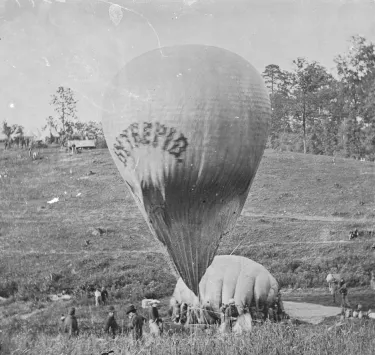
The capabilities of a tethered observation balloon to help the Union Army make maps, artillery spotting, and observe the location and activities of Confederates up to about 15 miles away were demonstrated at the outbreak of the Civil War in the Washington DC area by a number of accomplished aeronauts and by John LaMountain at Fortress Monroe. The US government first gave John Wise the title of “Chief Aeronaut” in mid-July 1861 but he soon abandoned that role after the mismanagement of the balloon he had constructed for the US Government during the battle of First Bull Run was accidentally destroyed. Before the end of the summer of 1861 Thaddeus Lowe would be named the next “Chief Aeronaut” for the Union Army. Lowe used his position to obtain funding and the Government’s permission to build seven balloons, 12 field gas generators, and a flat-topped balloon barge. The balloon barge was a specially made flat-topped “aircraft carrier” created by removing the superstructure and engines of the old steamer George Washington Park Custis.
To man his new balloons, Lowe initially hired a number of aeronauts such as Ebenezer Seaver, Joseph B. Starkweather, John Steiner, William Paulin, and John R. Dickinson. Lowe dispersed his balloons at locations all along the Potomac river from October 1861 into early 1862 providing Washington DC with some degree of security since a well placed tethered balloon could observe the movement of a large Confederate army up to a day’s march away.
In mid-March 1862 McClellan finally decided to move the Union army onto the Confederate Capitol, Richmond. He first enlisted Lowe to scout on ahead. Lowe sent one of his aeronauts, Ebenezer Seaver to Fortress Monroe with the balloon Constitution but due to weather problems no ascensions were accomplished until after most of McClellan’s forces had arrived in early April. With many of his aeronauts dispersed, sometime in March Lowe hired the famous New England aeronaut, James Allen as another assistant aeronaut asking Allen to follow the army to the Peninsula and arrive as soon as possible.
Lowe arrived at Hampton, Virginia on the Peninsula on March 28 with several balloons, gas generators, and all necessary inflation materials aboard his flat topped aircraft carrier the George Washington Park Custis.
With four army wagons and two gas generators in tow Lowe’s wagon train was then escorted to the Yorktown area by the 13th New York in Martindale’s brigade arriving at about noon on April 5. A detail of about 30 men from the 4th Maine was then created with two or sometimes three men per company assigned. Lowe, with the help of his few assistants, immediately started to train the new detailees and by the afternoon of the 5th one of Lowe’s smaller balloons was launched skyward. Lowe soon set up his permanent balloon camp near a steam driven sawmill that was the location of Heintzelman’s headquarters just two miles from Yorktown.
In the evening of April 6, Lowe received orders from McClellan to set up another balloon station at General Keyes’ Headquarters at Warwick Court House near the James River. Lowe left the sawmill camp in command of assistant Ebenezer Mason and rushed back to Fortress Monroe to obtain the balloon Constitution. In the meantime, James Allen arrived at Yorktown in time to continue the daily ascensions that Lowe had started.
After struggling to obtain the support he needed to move a balloon train to Warwick Court House from Fortress Monroe, Lowe completed his task and returned to Yorktown near mid-April personally taking control of the sawmill balloon camp and sending Allen to Warwick Court House to help Seaver get the balloon Constitution fully inflated and into operations. In support of the Warwick Court House balloon station a detail of 35 men from Company A of the 85th Pennsylvania Infantry were assigned. By April 19th the balloon Constitution was taking as many as four officers aloft to view the Confederate fortifications in front of them and to be on the lookout for the CSS Virginia which was expected to cruise up and down the James River at almost any time shelling the Union position.

Lowe’s nearly daily balloon ascensions at Yorktown attracted much attention from the Confederates with the balloon being a constant target for their guns. Lowe stated, “the enemy opened upon it with their heavy siege guns or rifled field pieces, until it had attained an altitude to be out of reach, and repeated this fire when the balloon descended, until it was concealed by the woods.” This begins a period of regular balloon observations of Yorktown in which Lowe would take officers and, later in the month of April, even reporters up for a view of the fortifications. On April 29, Lowe switched out the small balloon that he was using at Yorktown with the large balloon Intrepid also called the McClellan by some soldiers since it had a huge picture of McClellan painted on its surface. This balloon could take up as many as five observes or four observers and a telegraph.
Balloon observations of Yorktown on May 3rd showed the Confederate troops were in “unusual motion” and then they significantly stepped up the artillery firing on Lowe’s balloon keeping it down most of the day. Sometime in the early morning the next day, as observed by the balloon at the Warwick balloon station, the Confederates had abandoned their fortress. McClellan’s troops followed in pursuit. Soon after, Lowe was ordered to pack up and move up the York River with Franklin’s Division loaded on a flotilla. Lowe’s balloon barge, the George Washington Parke Custis with all his balloons and equipment, were towed up the York and then the Pamunkey Rivers reaching the Confederate “White House” in mid-May. The rest of McClellan’s army moving up the Richmond Peninsula by land reached the Confederate White House by May 17th. Lowe’s Yorktown detail of the 4th Maine soldiers arrived with the army and was reassigned to Lowe. From this base on the Pamunkey, McClellan moved onto Richmond with Lowe setting up his next balloon station on the Gaines farm.
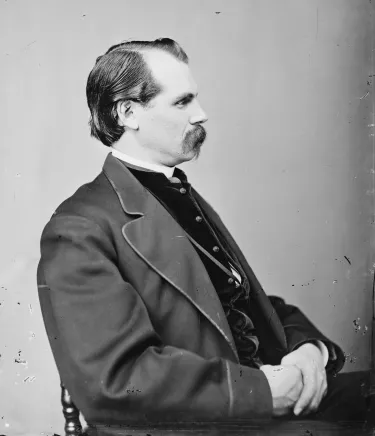
On May 22nd Lowe had his small one-man balloon, the Excelsior, quickly inflated by the 4th Maine and began taking officers up, one at a time, for a look at the new surroundings. Lowe himself reported having a fine view of Richmond seeing the streets, churches, and people moving about the town. Although the area was heavily wooded, maps of the roads leading into Richmond and the location of the observed Rebel positions and fortifications were made and continually updated with new information. Large troop movements in and out of Richmond were easily observed. Lowe soon inflated the larger balloon, Constitution, and was ordered to set up another balloon station at Mechanicsville a few miles north-west of the Gaines farm. Lowe moved the balloons Union and later the Excelsior to the new Mechanicsville location and put the experienced aeronaut James Allen in charge. A detail from the 20th Massachusetts under Lieutenant Messer was arranged to support the Mechanicsville balloon station.
McClellan received balloon reports on a regular basis. More than any other time in the history of the Balloon Corps, Lowe’s operations became well integrated into the army’s operation. For instance, on May 23rd in conjunction with the 2nd US artillery setup on the Gaines farm next to the balloon station, Lowe personally directed the shelling of the enemy’s ground in the vicinity of New Bridge. After 93 rounds, the Rebels scattered with unknown casualties. Later that day Park Spring, a telegraph operator from the Signal Corps arrived to set up a new telegraph station in the large five-man wicker basket used by Lowe’s largest balloons such as the Constitution and the Intrepid. Once established, McClellan received immediate reports from 1,000 feet. As more and more Rebel troops were observed and reported to mass in strength within sight of the balloons, McClellan’s response was to “hold ourselves in readiness for an attack.” He did not have to wait too long.
May 31, 1862: Battle of Seven Pines
Lowe’s next major challenge came on May 31st when Confederates under General Joe Johnston slammed into McClellan’s troops at the Battle of Fair Oaks (Seven Pines). At the time of the battle Lowe and Park Spring were both up in the balloon Intrepid. Spring recounted his experience to reporters after the battle and his statements appeared in a large number of major newspapers such as those published in Washington DC, New York and Philadelphia. In addition to the Union balloons, the Confederates also fielded their own balloon named the Gazelle but many of the Rebel troops called the balloon the Lady Davis or the Silk Dress Balloon since the silk used in its making were from bolts of various dress patterned material. The Gazelle was also a tethered balloon reaching no more than 500 feet in altitude filled with illumination gas in Richmond and then ran down the Peninsula on a flat-topped railroad car.
Currier & Ives illustration of the Battle of Fair Oaks. A Civil War balloon can be seen floating above the combat in the top left of this popular illustration. Credit: Library of Congress
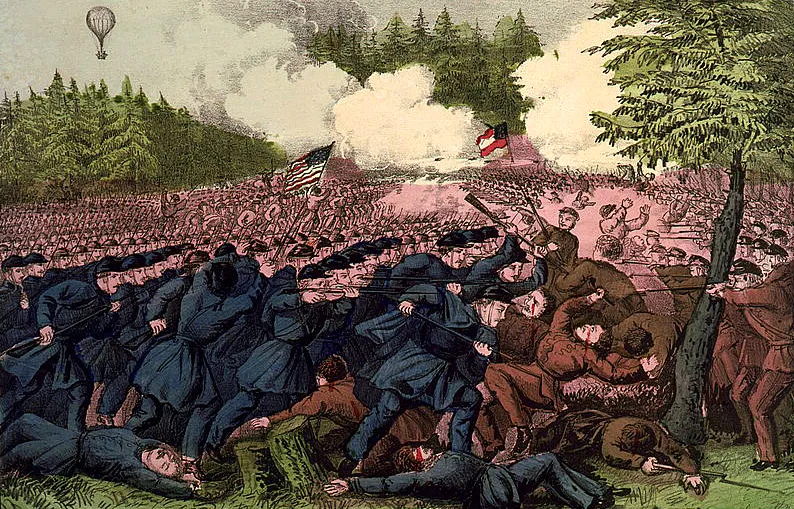
During the battle, in addition to the Gazelle, the balloon Intrepid was easily observed by soldiers on the battlefield. The reports of the battle from the Intrepid were telegrammed to McClellan’s headquarters and are believed to have been retransmitted to the War Department in Washington DC. At the end of the battle on June 1st Joe Johnston had been wounded and General Lee took over command of the Rebel forces.
On June 12th McClellan moved his camp from the New Bridge area to the Trent house situated south of the Chickahominy River on the Grapevine Road. As his usual custom, McClellan soon ordered Lowe to set up another balloon station at the Trent house. It took more than a week before Lowe brought the balloon Constitution over from the Gaines farm to set-up operations. With the Union at Mechanicsville, the Intrepid at Gaines farm, and the Constitution at the Trent house an arc of observations from the balloons would extend nearly 70 degrees from north-east to due east around Richmond. Once operational, McClellan may have thought he would be obtaining significant intelligence on the Confederates. If only the Rebels would stay put. But with a new third balloon station to be set up and manned, this would stretch Lowe’s ability to comply in a timely manner. To compound matters Seaver and Mason were fired by Lowe since they refused to work until they were reimbursed for the couple months back pay Lowe owed them.
Matthew Brady’s photographers, who arrived on the scene about June 14, 1862 and photographed Lowe’s operations, documented Lowe’s station on the Gaines farm. Lowe took the opportunity to recreate, in pictures, his reputed actions during the Battle of Fair Oaks and then later wrote about them extensively. Arguably, Lowe’s balloon observations at Fair Oaks and the intelligence he provided to McClellan during the time period he was at the Gaines farm balloon station is the high point in the history of the Union Balloon Corps.
June 26, 1862: Battle of Mechanicsville (Beaver Dam Creek)
Although much has been written about Lowe’s successes at the battle of Fair Oaks over the time of the Seven Day’s Campaign Lowe’s operations were severely hampered. With Lee in command the war would change radically with the Confederates now determined to push McClellan away from Richmond and off the Peninsula.
On the evening of June 25th Union General Fitz John Porter’s men were massed along the east side of the Beaver Dam Creek leaving nothing between the Mechanicsville balloon station and the massing Confederate army but a thinly spread line of pickets. On the morning of the 26th, as the balloon Union at Mechanicsville reached about 200 feet, Allen observed the Confederates flanking his pickets right before his eyes. Realizing the peril he was in, Allen ordered the balloon lowered as rapid-fire shots were working hard to knock him down. Since the balloon was being lowered too slowly, Allen leaped out of the basket, grasped one of the tethers and slid down the rope. Once completely lowered, the balloon gas was vented and the 20th Massachusetts detail packed up the station and moved to safety behind Union lines just in time to save themselves and the balloon from being captured. While Lowe and the 4th Maine were preoccupied with activities at the Trent house no balloons were aloft making it a perfect time for Lee’s attack on Porter’s men late in the afternoon of the 26th. At the end of the battle Porter’s line held and Lee’s plan of massing a large number of troops against Porter failed but he set in motion a doubt in McClellan’s mind of being able to take Richmond at all.
June 27, 1862: Battle of Gaines' Mill
Lee was determined to hit McClellan again and ordered another massive attack. McClellan ordered Porter to reform his line on Turkey Hill east of the Gaines farm necessitating the balloon station on the Gaines farm to be abandoned. From the Trent house, Lowe sent several of his men to the Gaines farm balloon station to save as much balloon equipment as they could. The men quickly packed up and move most of the equipment but without the horses needed, two of Lowe’s gas generators had to be left behind. Lowe finally got the Trent house balloon station up and operational making a series of ascensions and reporting directly to McClellan. As the Confederates moved eastward across Gaines’ farm toward the Union army’s position on Turkey Hill they captured Lowe’s two gas generators and would eventually put the Number 11 gas generator on display on the Richmond town square.
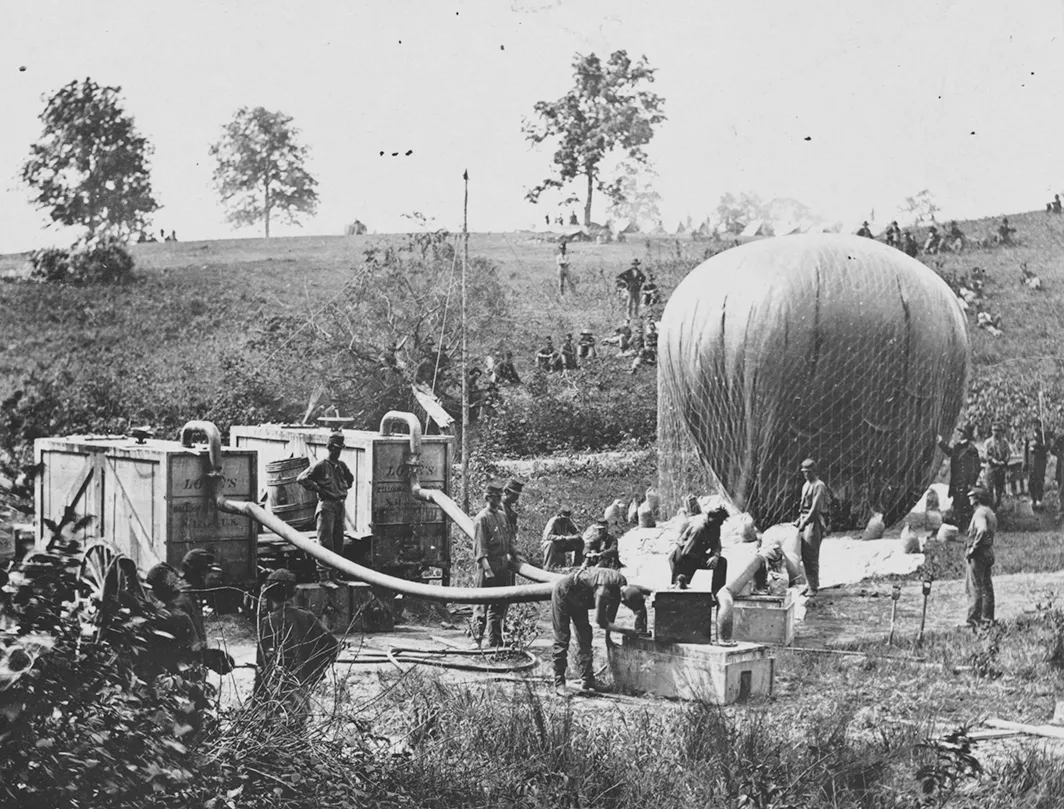
By mid-afternoon of the 27th the battle had started and Lee’s troops were again pressing Porter’s line hard. Lowe’s reports of the scene also contained his plea to be replaced. Lowe stated, “I am very unwell, and think it advisable for some good person to be constantly up.” But Lowe would not be relieved. The Intrepid was not the only balloon observing the Battle of Gaines' Mill. The Confederate Gazelle was also airborne manned by Porter Alexander. Alexander used flag signals to inform Lee of the movements of the Union army while Lowe dropped messages to two couriers standing ready below his balloon. Lowe and Alexander would eye each other on occasion. Lowe would later describe the scene to a reporter as “grand and picturesque beyond the compass of language.” He added, “the evolution of battalions, the chaotic masses of men, the rapid shifting of events, [and] the great veil of smoke [would] occasionally lift from the field as though the gods above had some desire to see, and the fearful picture behind the combatants, where the ground had been fought over and consecrated with blood…” As night was falling Porter’s portion of the Union army were ordered to move south escaping across the Chickahominy River and joining the rest of McClellan’s army leaving the field, and victory, to the Confederates.
The next day Lowe received orders to pack up and move out with the Army of the Potomac. McClellan cut his ties to his supply line at the Confederate White House on the Pamunkey River and raced to the other side of the Peninsula to the James River for naval protection and a route for eventual escape. With the Union army on the constant move Lowe was not able to reestablish any balloon stations. Lee’s strategy of continual fighting threw McClellan off guard. The battles of Savage Station (June 29th) and Malvern Hill (July 1st) would be fought without the aid of Union balloon reconnaissance.
However, the Rebel balloon Gazelle with Porter Alexander made ascensions daily until the enemy reached Malvern Hill. Alexander used The Teaser, a small-armed tug, to make ascensions from the deck observing the Union army moving toward the James River. On July 4th Alexander deflated the Gazelle and had the tug move down river so that he could be let off and report his observations to Lee. The Teaser, ran aground below Malvern Hill on a falling tide, and the Federal gunboats, the Maratanza and the famous Monitor, came up and captured both the boat and balloon, with the crew and Alexander escaping.
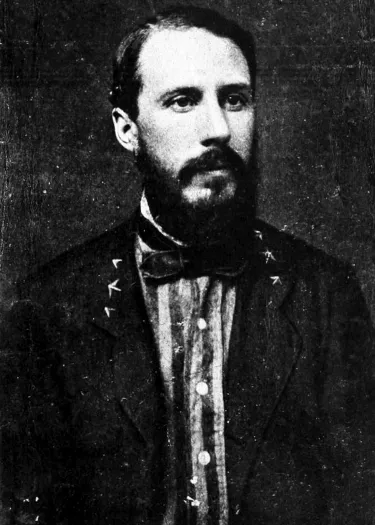
The Confederate balloonist Alexander later stated that “we could never build another balloon, but my experience with this gave me a high idea of the possible efficiency of balloons in active campaigns. Especially did we find, too, that the balloons of the enemy forced upon us constant troublesome precautions in efforts to conceal our marches.”
Lowe continued to be very sick and was finally sent home diagnosed with malaria on July 6th never to return to the Peninsula. He turned over the management of the Balloon Corps to his father Clovis and observational responsibility to aeronaut James Allen. With the Army of the Potomac all around him Allen set up the last balloon station of the Peninsula Campaign on the Berkeley Plantation with his first flight occurring on July 5th. Allen made frequent ascensions reporting directly to McClellan who, once again, found a new place to stay put and ponder the future with dreams of unrealized victory. On August 3rd McClellan was ordered to return the Army of Potomac to Washington DC. On August 13th the balloon station at the Berkeley Plantation was finally ordered to pack up and return home on the George Washington Parke Custis with the 4th Maine and 20th Massachusetts detailees returned to their units for the long march down the Peninsula to Fortress Monroe for their trip back to DC.
Under Lowe the aeronauts in the Balloon Corps made well over 3,000 balloon ascensions and supported a number of campaigns. The Balloon Corps was finally disbanded when the Union army returned to Washington DC after the Battle of Chancellorsville. It has indelibly left its mark as our nation’s first Air Force.
After 25 years, the American Battlefield Trust is in the final stretch of one of the most ambitious preservation campaigns in its history. Every gift...
Related Battles
5,739
7,997
6,800
8,700

